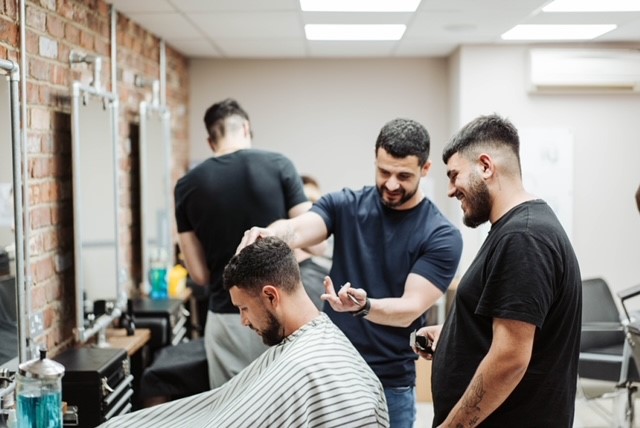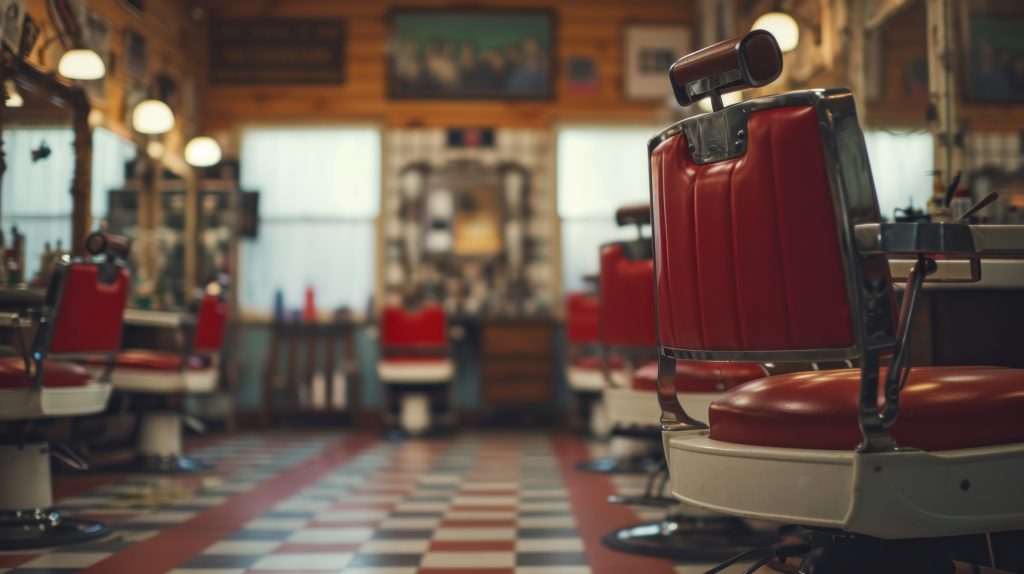Barbering is among the world’s oldest professions, boasting a rich history that spans various cultures and centuries. From ancient rituals to contemporary grooming trends, barbering has undergone significant evolution. Today, barbers are not just hair experts but also artists, creating unique styles and offering personalized services. In this blog, we’ll explore the captivating history of barbering and how it has transformed into the modern profession we recognize today.
Ancient Barbering: Rituals and Status Symbols
Barbering dates back thousands of years, with evidence of barbers in ancient Egypt, Greece, and Rome. In ancient Egypt, barbers held high regard and played a crucial societal role. They maintained the grooming standards of the elite, often shaving the heads and beards of pharaohs and priests. For Egyptians, cleanliness and grooming were linked to spirituality and social status, and barbers were entrusted with this sacred task.
In ancient Greece, barbershops were more than just places for haircuts; they were social hubs where men gathered to discuss politics, philosophy, and daily news. Barbering was a respected profession, and barbers were considered grooming experts, often using razors made of sharpened stones or bronze.
The Romans took barbering even further, with men visiting barbers daily for grooming and socializing. The first public barbershop, or tonstrina, opened in Rome in 296 BC, where men would gather to have their beards trimmed and hair styled while engaging in lively conversation.
The Middle Ages: Barbers as Surgeons
During the Middle Ages, barbers expanded their roles beyond haircuts and shaves, becoming known as “barber-surgeons.” With few medical practitioners available, barbers took on minor surgeries, dental work, and bloodletting in addition to grooming. Their tools—razors, scissors, and knives—served both grooming and medical purposes.
This dual role persisted for centuries, with barber-surgeons performing tasks from tooth extractions to amputations. The iconic red and white barber pole we see today originates from this period, symbolizing the blood (red) and bandages (white) used in these procedures. The swirling pole was once a staff patients gripped during bloodletting, a procedure believed to balance the body’s humors.
It wasn’t until the 18th century that the medical and grooming professions split, with barbers focusing solely on hair and beard care, leaving medical procedures to licensed doctors.
The Renaissance of Barbering: Professionalization and Modernization
As the medical side of barbering faded, the 19th century marked the professionalization and modernization of barbering as we know it. Barbershops once again became social spaces where men of all classes gathered, not only for grooming but for camaraderie.
The barbering profession began to grow in prestige, with skilled barbers offering luxurious services such as hot shaves, scalp massages, and hair tonics. The tools of the trade evolved, with the introduction of new clippers, razors, and grooming products that made the experience more sophisticated and comfortable.
During this period, barbers also began to adopt the styles of the time, offering clients the latest haircuts and beard trends. The sleek, clean-shaven look became popular, as well as the handlebar mustache and sideburns, reflecting the fashion of the era.
The 20th Century: The Rise of Barbershops in Pop Culture
In the 20th century, barbershops emerged as iconic symbols of male grooming. The 1920s saw the rise of classic barbershop culture, where men frequented these establishments not only for haircuts but also for socializing and networking. Barbershops were often adorned with the signature barber pole, leather chairs, and a cozy, masculine ambiance.
The styles of the time mirrored changing fashion trends, with short, sharp cuts becoming popular during the World Wars, while the 1950s brought the rise of pompadours and slicked-back looks inspired by rock-and-roll stars like Elvis Presley.
Barbering remained a cornerstone of men’s grooming, with many barbers developing long-lasting relationships with their clients. It became a rite of passage for boys to visit the barbershop with their fathers, where they would receive their first haircut and enter the world of manhood.
Modern Barbering: A Blend of Tradition and Innovation
Today, barbering is a unique blend of tradition and innovation. While classic barbershops continue to thrive, offering timeless services such as hot towel shaves and scissor cuts, modern barbers have embraced new techniques and trends.
Barbering is no longer limited to just haircuts and shaves. Today’s barbers are skilled in beard grooming, styling, and even hair coloring. The rise of social media has also played a major role in elevating the art of barbering, with barbers showcasing their work online and attracting clients with unique styles, creative designs, and cutting-edge trends.
Modern barbershops often serve as more than just grooming establishments. Many have evolved into lifestyle spaces, offering coffee, drinks, and even grooming products for sale. The experience is just as important as the haircut itself, with customers coming in not only for a cut but also for the atmosphere and conversation.
Barbering has also become more inclusive in recent years, with a growing number of barbers catering to both men and women. Unisex barbering is becoming increasingly popular, with modern barbers skilled in delivering a range of services for all hair types.
The Future of Barbering: What’s Next?
As the world of grooming continues to evolve, the future of barbering looks bright. Technology is playing a greater role in the industry, with barbers using booking apps, digital payment systems, and even virtual consultations to enhance the client experience.
We’re also seeing a return to eco-friendly and sustainable practices, with many barbershops embracing organic products, waste reduction, and energy-efficient equipment.
At the same time, barbers are continuing to push the boundaries of creativity, offering unique hair designs, innovative styling techniques, and personalized grooming experiences. As a result, barbering is not just a profession—it’s an art form that continues to inspire and evolve.
At New Face Academy, we honor the rich tradition of barbering while preparing the next generation of barbers with cutting-edge training and consultancy services. Whether you’re looking to start your own barbershop or refine your skills, we’re here to help you succeed. Contact us today to learn more!




